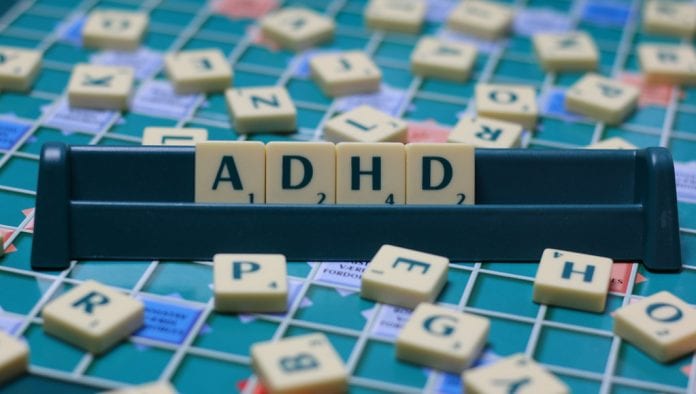Attention deficit hyperactivity disorder, or ADHD in a nutshell, is generally diagnosed in children by the time they’re teenagers, with the average age of diagnosis being seven years old…
Imagine what it would be like to realize that your child acts and thinks
differently. He says and does whatever comes to mind and when you have guests he constantly interrupts while they are talking. What it would be like to learn from his teacher that he is ‘rude and disruptive’, not capable of paying attention or following simple instructions in the classroom. Imagine what it would be like to be called into school, because your child is under performing.
The frightening realization that your child’s schooling career might be in jeopardy could drive you into the arms of a doctor. When you take your child there, instead of a comprehensive medical assessment and blood tests, you may end up having a conversation about your child’s behavior. After a few minutes, you could leave with an Attention Deficit-Hyperactivity Disorder (ADHD) diagnosis coupled with a prescription for Ritalin or something similar.
According to the Attention Deficit and Hyperactivity Support Group of Southern Africa (ADHASA), ADHD is understood to appear in 10% of the South African population, and is found in all ethnic and socio-economic clusters.
Attention deficit hyperactivity disorder, or ADHD, is generally diagnosed in children by the time they’re teenagers, with the average age of diagnosis being seven years old.
What is ADHD?
A person with ADHD has differences in brain development and brain activity that affect attention, the ability to sit still and self-control. ADHD can affect a child at school, at home, and in friendships.
What Are the Signs of ADHD?
All kids struggle at times to pay attention, listen and follow directions, sit still or wait their turn. But for kids with ADHD the struggles are harder and happen more often.
Toddlers, Teens and Adults with ADHD may display signs such as being inattentive, hyperactive or impulsive. They may also have a combination of these traits.
Inattention
You might not notice it until a child goes to school. In adults, it may be easier to notice at work or in social situations
The person might procrastinate, not complete tasks like homework or chores, or frequently move from one uncompleted activity to another. They might also:
- Be disorganized
- Lack focus
- Have a hard time paying attention to details and a tendency to make careless mistakes. Their work might be messy and seem careless.
- Have trouble staying on topic while talking, not listening to others, and not following social rules
- Be forgetful about daily activities (for example, missing appointments, forgetting to bring lunch)
- Be easily distracted by things like trivial noises or events that are usually ignored by others.
Hyperactivity
It may vary with age. You might be able to notice it in pre-schoolers. ADHD symptoms nearly always show up before middle school
Kids with hyperactivity may:
- Fidget and squirm when seated.
- Get up frequently to walk or run around.
- Run or climb a lot when it’s not appropriate. (In teens this may seem like restlessness.)
- Have trouble playing quietly or doing quiet hobbies
- Always be “on the go”
- Talk excessively
Impulsivity
You may notice impulsivity in pre-schoolers. ADHD symptoms nearly always show up before middle school
Kids with Impulsivity may:
- Impatience.
- Having a hard time to wait to talk or to react.
- Need to move consistently, as well as displaying impulsive behavior
Toddlers and pre-schoolers with ADHD tend to be constantly in motion, jumping on furniture and having trouble participating in group activities that call for them to sit still. For instance, they may have a hard time listening to a story.
School-age children have similar habits, but you may notice those less often. They are unable to stay seated, squirm a lot, fidget, or talk a lot.
Sometimes parents and teachers notice signs of ADHD when a child is very young. But it’s normal for little kids to be distractible, restless, impatient, or impulsive — these things don’t always mean that a child has ADHD.
Attention, activity, and self-control develop little by little, as children grow. Kids learn these skills with help from parents and teachers. But some kids don’t get much better at paying attention, settling down, listening, or waiting. When these things continue and begin to cause problems at school, home, and with friends, it may be ADHD.
What Causes ADHD?
It’s not clear what causes the brain differences of ADHD. There’s strong evidence that ADHD is mostly inherited. Many kids who have ADHD have a parent or relative with it.
ADHD can improve when kids get treatment, eat healthy food, get enough sleep and exercise, and have supportive parents who know how to respond to ADHD.
Impact of ADHD across the lifespan…
ADHD can have a significant social impact on patients’ lives, causing disruption at school, work and in relationships. Symptoms of ADHD may also increase risk-taking behaviour. Consequently, the quality of life of patients with ADHD may be impaired, although some positive aspects of ADHD have been reported. ADHD can also be associated with substantial economic burden for patients, families and societal healthcare services.
How Is ADHD Treated?
Treatment for ADHD usually includes:
Medicine: This activates the brain’s ability to pay attention, slow down, and use more self-control.
Behaviour therapy: Therapists can help kids develop the social, emotional, and planning skills that are lagging with ADHD.
Parent coaching: Through coaching, parents learn the best ways to respond to behaviour difficulties that are part of ADHD.
School support: Teachers can help kids with ADHD do well and enjoy school more.
What medications are used to treat ADHD?
There are a variety of medications used to treat ADHD in both children and adults. Let’s look at some ADHD meds:
Stimulants: These include drugs like Adderall and Ritalin and work by boosting levels of dopamine and norepinephrine in the brain, which helps nerves in the brain communicate better.
Non-stimulants: These include drugs like Strattera and Clonadine and work by boosting norepinephrine in the brain as well. They are sometimes used when stimulants don’t work or cause unwanted side effects.
When typical ADHD meds don’t work, or if other symptoms are present combined with ADHD, sometimes meds like antidepressants are prescribed.
The challenge with ADHD medication.
ADHD/ADD medications carry the risk of cardiac toxicity, irregular heartbeat and even sudden death due to adverse cardiac events.
In addition they have been found to impair proper growth, diminishing growth in both height and weight of children taking the medications, particularly those taking the drugs for longer than 18 months.
Side effects for anti-anxiety medication also include depression and suicidal thoughts.
Stimulants (used for ADHD/ADD) may cause personality changes.
Mood stabilizer side effects may include agitation, mood swings, and abnormal thinking.
Other side effects may include tics, headaches, and nausea.
Another concern with ADHD medication is that you don’t know how your child will respond, and often, a secondary or third medication may be prescribed to control symptoms that are caused by the original medication.
As if all of this is not concerning enough, consider that many acts of violence have been carried out by children, adolescents and young adults either on or withdrawing from psychiatric medications.
When ADHD is not treated, it can be hard for kids to succeed. This may lead to low self-esteem, depression, oppositional behaviour, school failure, risk-taking behaviour, or family conflict.
Misdiagnosis is also common, which means many children may be taking medication eg Ritalin unnecessarily.
Resulting in alarming side effects like:
- Nerve damage
- Hormonal disruption
- Growth stunting
- Sleep problems
- Loss of appetite
- Increase heart rate
- Seizures
Alternative medication options are available such as Essential Oils namely “Focus” by Root Element. Please visit the Root Element website for more information on their 100% pure & natural essential oil range with separate formulas for Children and Adults. Changing lives one drop at a time Naturally.















